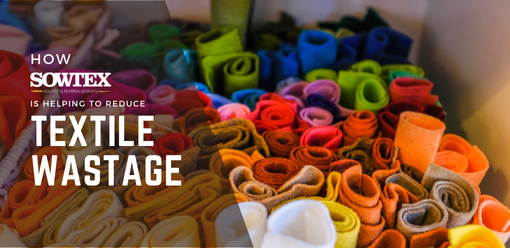


With years of expertise in the textile ecosystem, the founders and senior team members at Sowtex have developed strategies to reduce waste by minimizing the number of steps involved in the lifecycle of a textile product—from manufacturing to export. Initiatives like the Sowtex Design Lab have further reduced material usage, increased efficiency, and lowered pollution levels.
Textile production consumes significant amounts of energy, water, and raw materials such as fibers, dyes, and chemicals. By streamlining processes, Sowtex ensures reduced usage of these resources, directly cutting down on waste generation.
Additionally, Sowtex fosters awareness about sustainable practices by organizing panel discussions during Textile Sourcing Meets. These events engage policymakers, stakeholders, and industry experts in meaningful conversations about sustainability.
By prioritizing essential processes, textile developers and stakeholders can focus on critical areas, enhancing efficiency. Companies like Yes Fashion and Rasik Vatika Clothing have adopted such practices, producing recycled polyester for commercial use.
Many textile processes involve harmful chemicals and dyes. Sowtex promotes eco-friendly fabrics like bamboo and hemp by spotlighting companies such as Weaving Vibes, thus encouraging sustainable material use.
Globally, established textile players have adopted practices to minimize waste, including improving design processes, adopting efficient production methods, recycling materials, implementing waste management strategies, and educating employees and consumers. Sowtex has implemented several strategies for procurement and product development:
Sourcing eco-friendly materials like recycled polyester or organic cotton minimizes the environmental impact and reduces waste. Sowtex partners with suppliers that prioritize sustainable manufacturing practices.
Creating durable, timeless products reduces waste by discouraging frequent disposal. This strategy also fosters customer loyalty and repeat business.
Digital sampling catalogues, 3D modeling software, and virtual prototyping offered by Sowtex allow designers to test and refine products before production, reducing waste from flawed production runs.
Optimizing manufacturing processes reduces waste, minimizes inventory, and enhances efficiency.
By implementing programs that repurpose discarded materials into new products, Sowtex helps divert waste from landfills and creates new revenue streams while reducing environmental impact.
Globally, less than 1% of textile waste is recycled into new clothing, with most ending up in landfills or being incinerated. Consumer behavior also plays a role—people now buy 60% more clothing than 15 years ago and keep garments for only half as long.
Sowtex, however, is not waiting for Earth Day to address this issue. Through awareness campaigns, behavior change initiatives, and the use of sustainable raw materials, the company is championing a long-term solution to reduce textile waste and make a lasting environmental impact.
Please reach out this https://sowtex.com
